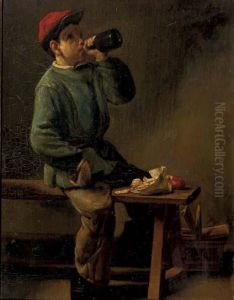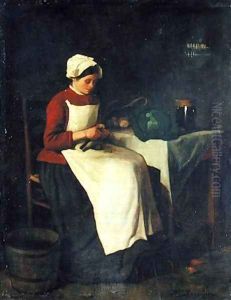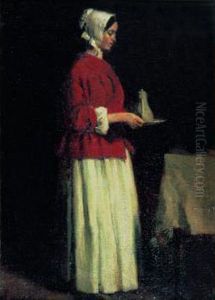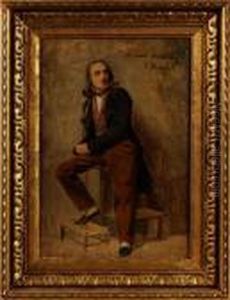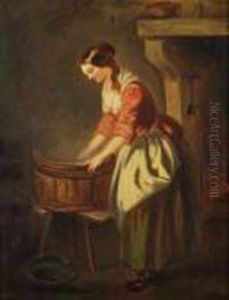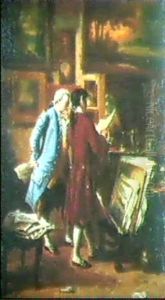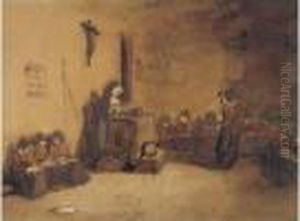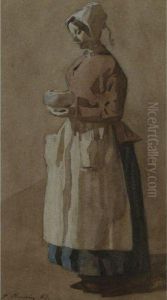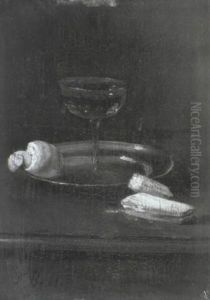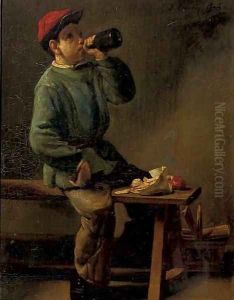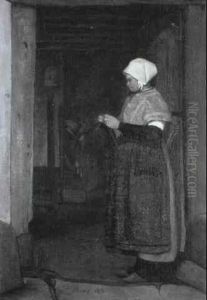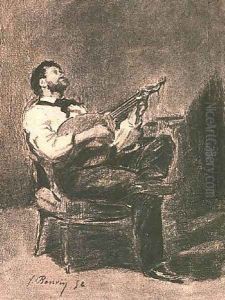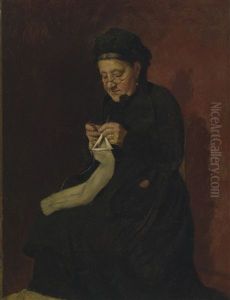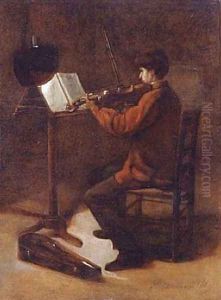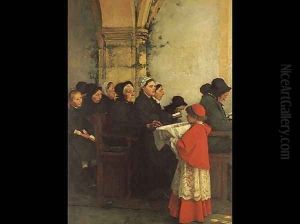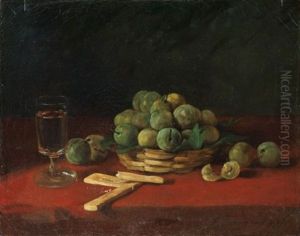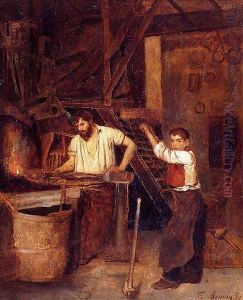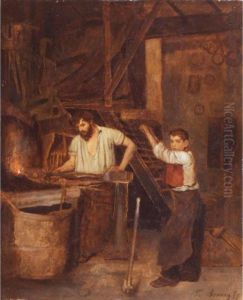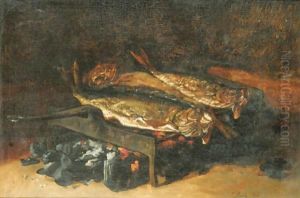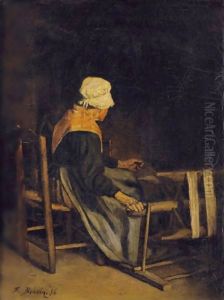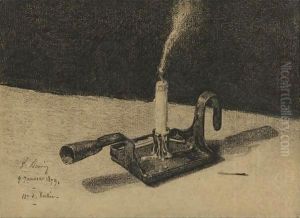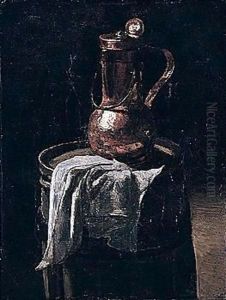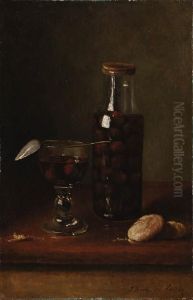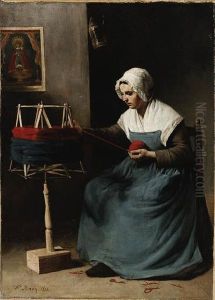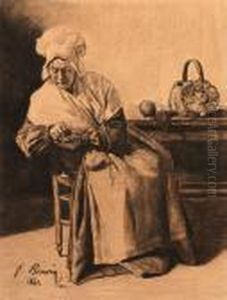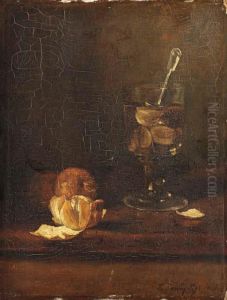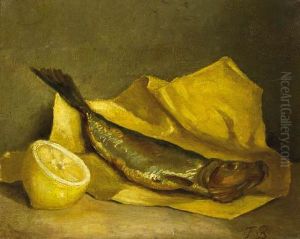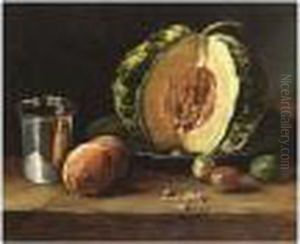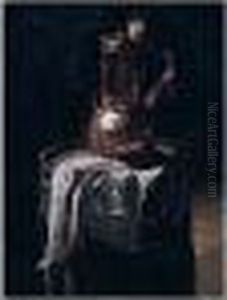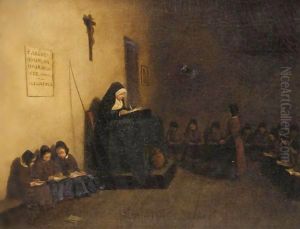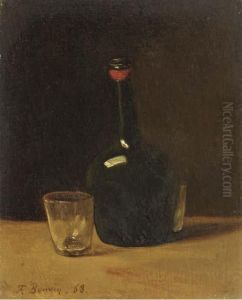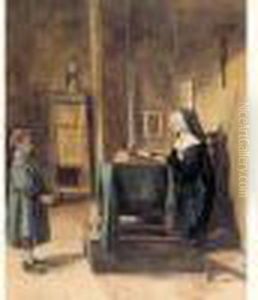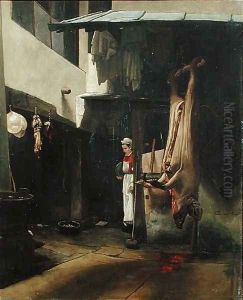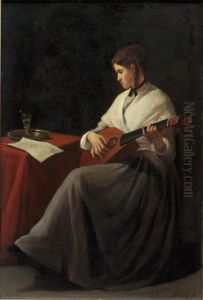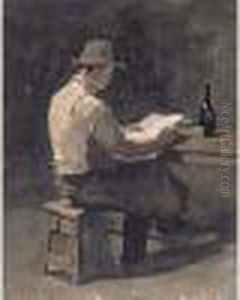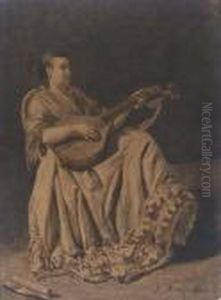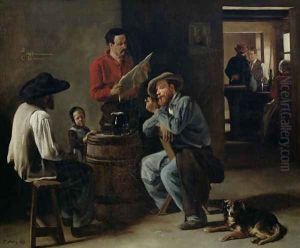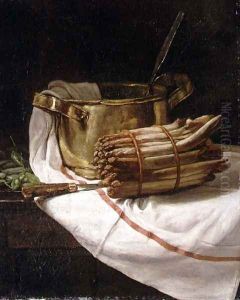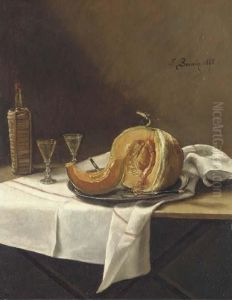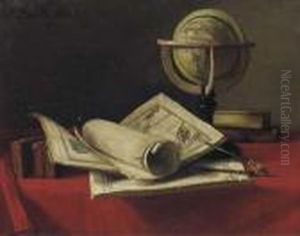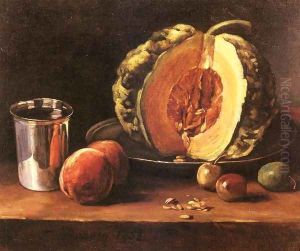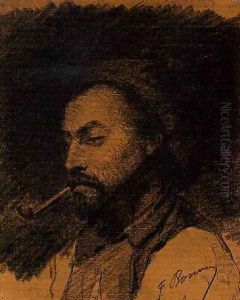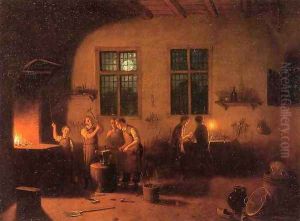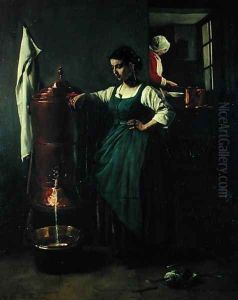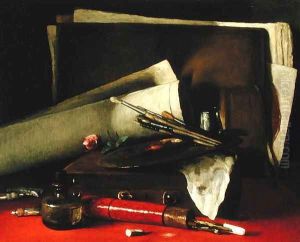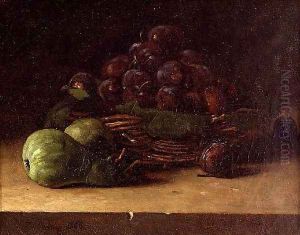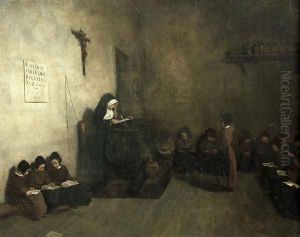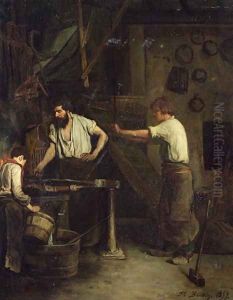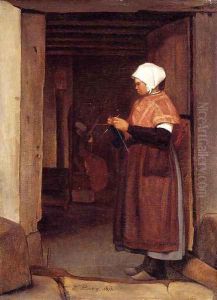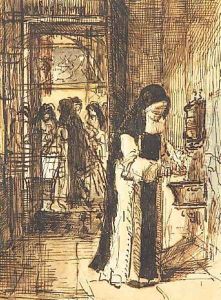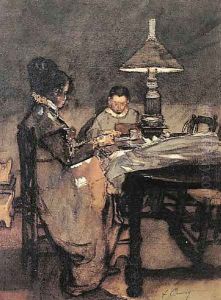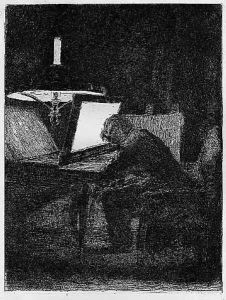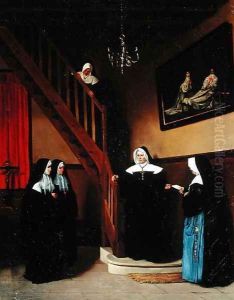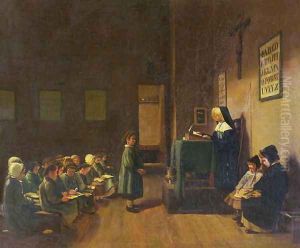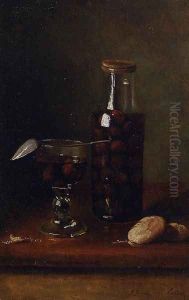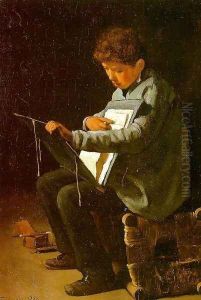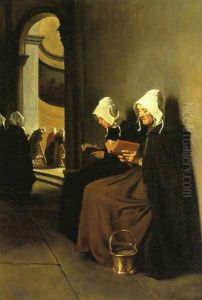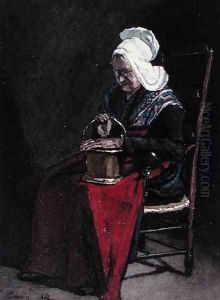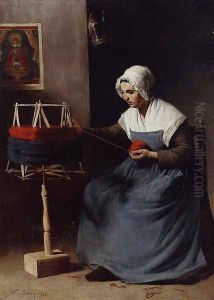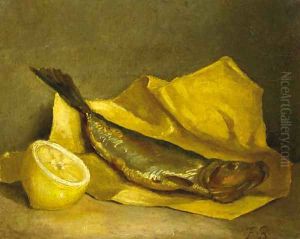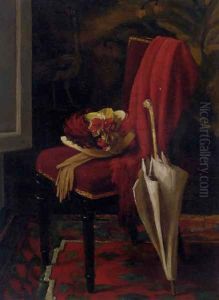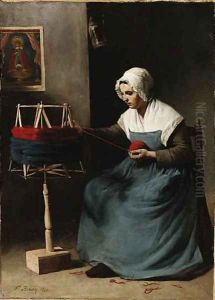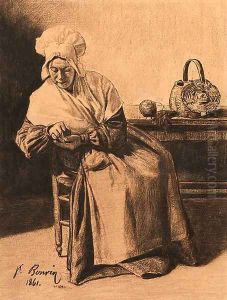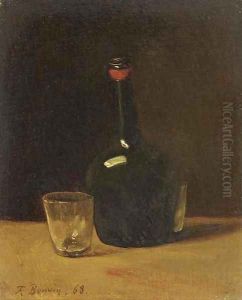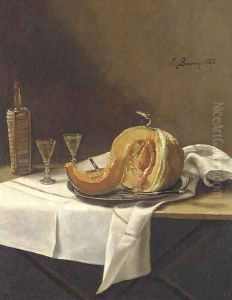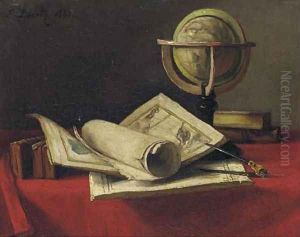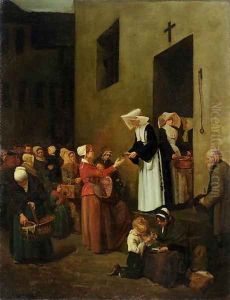Francois Bonvin Paintings
François Bonvin was a French realist painter, born on November 22, 1817, in Paris, France. He is known for his meticulously detailed still lifes, genre paintings, and interiors that often reflect the influence of Dutch 17th-century masters and the French painter Jean-Baptiste-Siméon Chardin. His works are characterized by a sober color palette, careful attention to detail, and a compassionate portrayal of modest domestic and working-class settings.
Bonvin was largely self-taught, although he did receive some informal training from a neighbor who was a retired artist. His early years were marked by struggle and poverty, as he worked in various government offices to support himself while pursuing his passion for painting. He made his debut at the Paris Salon of 1847, and by the 1850s, Bonvin had begun to achieve recognition for his work. His 1853 painting 'The Rag Picker' was particularly well received and marked a turning point in his career.
Throughout his life, Bonvin faced financial and critical challenges, but he continued to produce work that resonated with the realist ethos, focusing on the lives of the working class and the unidealized representation of everyday scenes. He was part of the realist movement in France, which included artists like Gustave Courbet and Jean-François Millet, who sought to depict subjects drawn from common life and the contemporary world around them, rather than the historical, mythological, and romantic subjects that were popular at the time.
Bonvin's realist approach did not always win him favor with the critics or the public, yet he found support and friendship among a group of like-minded artists, including the printmaker Charles Meryon and the painter Henri Fantin-Latour. Bonvin's influence was also felt among the younger generation of artists, including the impressionists, who admired his dedication to depicting the truth of visual experience.
Bonvin's work was also part of the broader 19th-century interest in social issues and the conditions of the working classes, a theme that resonated with writers such as Émile Zola. Despite his contributions to the realist movement, Bonvin never achieved the same level of fame as some of his contemporaries. He continued to exhibit his works at the Salon until the end of his life, although his health and financial situation declined in his later years.
François Bonvin passed away on December 19, 1887, in Saint-Germain-en-Laye, near Paris. After his death, his work fell into relative obscurity but has since been rediscovered and appreciated for its honest representation of 19th-century life and its fine technical skill. Today, Bonvin's paintings can be found in major museums around the world, where they continue to be studied and admired for their quiet dignity and meticulous craftsmanship.
